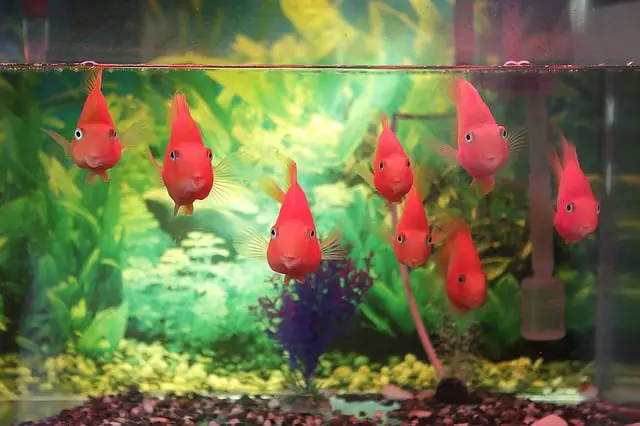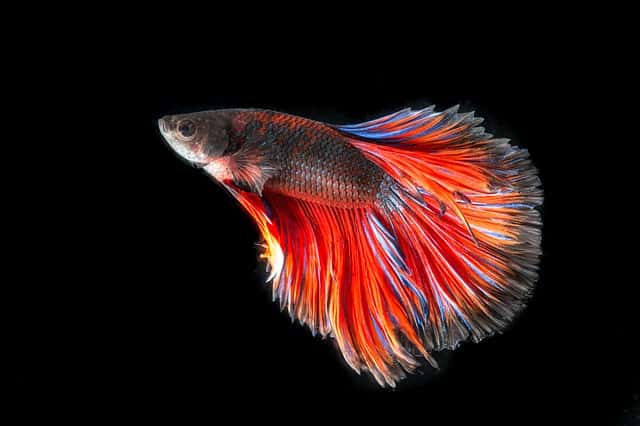Owning and maintaining an aquarium is no easy task. A lot of work goes into cleaning and caring for the aquatic creatures that inhabit it. If you’re an aquarist who’s ‘taking a break’ from the hobby or you need to store your tank temporarily, you may be wondering how long an aquarium can sit empty?
Fish tanks can stay empty for as long as need be, provided they’re kept in a temperature-controlled environment. The composition of the tank also affects the duration. In most cases, acrylic tanks can sit longer than glass tanks since they don’t have silicone seams that can crack and leak over time.
Now that you know the factors that influence how long an aquarium can sit empty, let’s explore this topic together in more detail. We’ll learn how fluctuating temperatures affect aquariums, why the design and/or composition of the tank impacts how long it can remain idle, and how to properly store a non-functioning or uninhabited tank.
So, if you’re ready to learn more about temporarily storing a non-functioning aquarium, then let’s begin!
What Factors Affect How Long a Fish Tank Can Sit Empty?
The length of time an aquarium can sit empty depends upon both the tank material and the surrounding environment. If you keep the tank in a temperature-controlled environment, it can be left empty for as long as you need.
However, if you leave a glass tank out in the garage where the temperature fluctuates, the chances of the silicone cracking are high. When in left in the house, on the other hand, it can sit empty for a long time without any issues.
That said, if you leave a glass tank in the basement where it tends to be cooler year-round, you could leave the water in the aquarium to help keep the temperature more stable. In most cases, however, if the surrounding environment only fluctuates within in few degrees, this isn’t necessary.
On the flip side, if you have an acrylic tank, you can store it almost anywhere you like since fluctuating temperatures aren’t an issue. Acrylic tanks don’t have seams so there’s less risk of cracking. If you’re an aquarist that moves a lot, then acrylic is the way to go.
How Long Can an Acrylic Fish Tank Sit Empty?
An acrylic tank can sit without water for as long as you like! They don’t have seams so there’s less chance of leaks. They can be kept in a basement, garage, even outside, so long as the temperature doesn’t fluctuate drastically. Typically, acrylic tanks can handle changes in temperatures better than glass tanks.
How Long Can a Glass Fish Tank Sit Empty?
A glass tank can sit without water for a brief period but if you want to keep it empty for longer than a few months, you’ll need to leak-proof it before starting it up again. Glass is an inert element, so it’s not affected by changes in temperature.
It’s the silicone which seals the glass seams that’s the issue. This flexible polymer can crack over time, especially when subjected to an unstable environment such as extreme hot and cold temperatures. If kept in an area that’s heat controlled, it should be fine.
*For more information on how to properly leak-proof a glass fish tank, see the subheading How Do You Reseal an Aquarium? – in my article entitled When to Reseal an Aquarium?

How Long can a Fish Tank Go without Water?
Depending on the composition of the tank and the environment in which it’s kept, an aquarium can go without water in it for months or even years. Months for glass tanks and years for acrylic tanks, if the surrounding area is heat controlled and the tank is stored on a level surface in an undisturbed area.
How do you Store an Empty Fish Tank?
The steps to storing an empty fish tank (and its contents) include the following:
How to Store the Aquarium Filter:
- Unplug the filter and remove it from the aquarium.
- Throw away the carbon media or sponge – this part will need to be replaced with a new one, should you decide to start up the tank again in the future.
- Clean the filter thoroughly with hot water and a filter cleaning brush – make sure to scrub out any algae particles and allow the filter to air dry completely before storing.
- Once dry, pack the filter in a box – place packing paper around it to keep it secure while in storage.
- Clearly label the box and place it on a shelf where you can easily access it in the future.
How to Store the Aquarium Light:
- Unplug the lamp and carefully remove it from the aquarium.
- Remove the bulbs with care – if in good condition, dry them off fully and wrap them gently with packing paper – if not in good condition, discard them and purchase new ones, if (and when) you decide to start the tank up again.
- Repack the lamp in the original box, if you still have it – if not, find a box large enough to safely hold both the lamp and the bulbs.
- Add a desiccant to prevent moisture damage to the light, finishing filling it with packing paper, and seal the box securely.
- Label the box and place it somewhere it won’t get damaged.
How to Store Aquarium Decorations:
- Remove all decorations from the aquarium.
- Take a filter brush and scrub away any algae build-up – if not too corroded, use a sponge or wash cloth instead.
- Find a soft towel and dry off the decorations – allow them to air dry for a few hours to ensure they’re completely free of moisture before storing.
- Wrap the decorations in packing paper and carefully place them in a sturdy box.
- Label the box and place it on a shelf, out of harm’s way.
How to Store Aquarium Gravel:
- Remove the gravel substrate from the tank with a sand shovel.
- Place the substrate into a pot of water and boil it for 5 to 10 minutes.
- Allow time for the pot to cool down and then strain the contents using a colander.
- Place the gravel onto a large cloth and allow it to air dry completely.
- Put the clean, dried gravel into several Ziploc bags and add a desiccant to each bag – you won’t need a separate box as you’ll store the gravel with the tank.
How to Store an Empty Aquarium:
- Once all decorations and equipment have been removed, fill up the fish tank with tap or hose water and add a large bottle of vinegar.
- Allow the vinegar water to sit for an hour or more.
- Take an algae scrubber and clean the walls of the tank using the vinegar water.
- Use a siphon and remove the vinegar water into a bucket and then discard.
- Rinse out the tank with clean water and dry both the inside and outside walls with a soft, absorbent towel.
- Allow the fish tank to air dry for several hours to ensure it’s completely free of moisture.
- Dig out the original aquarium box, if you still have it – if not, visit your local self-storage facility and buy a box big enough to store house it – choose one made of strong, extra thick cardboard.
- Line the bottom of the box with packing paper and gently place the empty tank inside – put the Ziploc bags of gravel inside the tank – add a desiccant and fill the tank with packing paper.
- Place packing paper all around the tank and seal the box tightly.
- Label the box and place it on a flat surface in an area where it won’t be tampered with.

Do You Need a Lid for an Empty Fish Tank?
No, you don’t need a lid to store an empty fish tank. A lid will help keep dust and debris out of an idle tank, but it’s not necessary. The main factor in safely storing an empty aquarium is the surrounding environment. A heat-controlled, non-congested area is best. The ground or floor on which the tank is stored should be sturdy and level. And bear in mind that an acrylic tank can sit longer than a glass one.
Final Thoughts
To summarize, the composition of a fish tank and the environment in which it’s stored will affect how long it can remain empty. Aquariums can sit idle for months (even years) on a level surface and in a temperature-controlled area. In general, acrylic tanks can sit longer than glass tanks since they don’t have seams that tend to crack and leak over time.
I trust this article has been of help to you. Thanks for reading and best of luck with your aquarist hobby!
Recommended Posts
What are Common Fish Tank Problems?
How Long Do Fish Tanks Last? (Glass Versus Acrylic)






